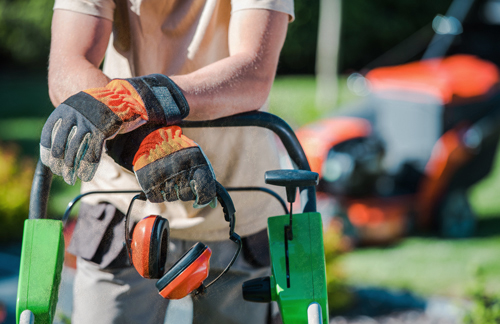|
Proper lawn maintenance is important in the early spring, as winter can often leave your grass, plants, and other landscaping damaged. If you leave it unattended, then your lawn can end up looking a little shabby and detract from your home’s curb appeal. Thankfully, with just a bit of time and effort, you can get your lawn looking healthy and beautiful again. Here’s how:
1. Start with dethatching
Dethatching is the process of removing the layer of organic material that can build up on the surface of the soil over time. Leaves, dead grass, and other debris that has settled over your lawn during the winter prevent much-needed airflow and create favourable conditions for unwanted pests. Dethatching can be done manually using a rake. For larger lawns that tend to build up thick layers of thatch, it may be worthwhile to invest in a power dethatcher.
2. Clear out the debris
Once you’ve finished dethatching, it is important to remove all the thatch as well as other debris that has accumulated on your lawn over the winter months. Cleaning your lawn, picking up debris from around bushes and shrubs, and making your plant beds neat and tidy will prevent soil compaction and allow for healthier grass and plant growth. Plus, a yearly spring cleaning after the snow melts will help your landscaping look nicer and more aesthetically appealing over the coming months.

3. Apply fertilizer
After you’ve tidied up, give your lawn the nutrients it needs to grow healthy and strong by applying fertilizer. A slow-release fertilizer is best, as it will maximize nutrient absorption by feeding your lawn over a longer period of time. Slow-release fertilizer can also be added to any other plants, shrubs, and trees that make up your landscaping. Make sure you follow the instructions on the bottle for directions on how to use your fertilizer for different types of plants.
4. Add mulch
Protect all of the hard work you have put into cleaning and feeding your landscaping with a layer of mulch. Mulch can be added to plant beds, gardens, and tree wells, as well as around shrubs and other plants. It has a number of functional benefits, including preventing weed growth and keeping soil from drying out by helping it retain moisture. A good rule of thumb is to add mulch to a thickness of about one inch.
5. Prune trees and shrubs
Finally, it’s time to trim and prune back any trees and shrubs that have become overgrown. This will not only help your landscaping look tidier but eliminating dead branches also makes way for new and healthy growth. Not taking care of dead or broken branches can actually put your property at risk during a storm. Strong winds may cause broken branches to snap off and damage your home or lawn. Keeping everything neatly trimmed back will give you greater peace of mind.
While some days can still be a little nippy, early spring is a great time to start enjoying the fresh air again. Head outside now to give your landscaping some TLC, and your lawn will certainly thank you for it later.
|